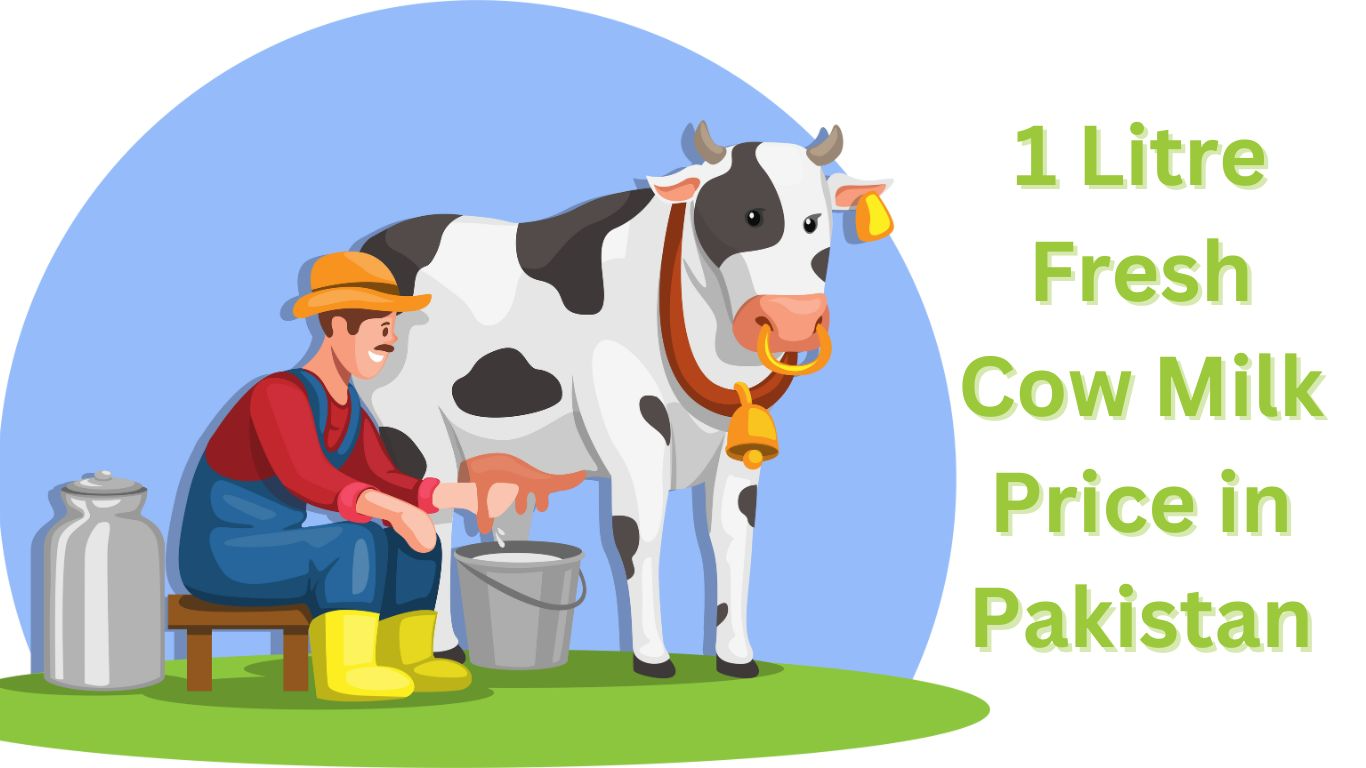Fresh cow milk is a staple in many households across Pakistan, providing essential nutrients and serving as a base for countless traditional dishes and beverages. For many, the price of milk is not just a number; it’s an indicator of economic trends, market dynamics, and daily affordability. Understanding the cost of fresh cow milk in Pakistan can help consumers make informed decisions and reflect on broader economic factors.
1 Litre Fresh Cow Milk Rate in Pakistan
| 1 Litre Fresh Cow Milk | Price in Pakistan |
|---|---|
| 1 Litre Fresh Cow Milk Rate | Rs.250 to 300 |
1 Litre Fresh Cow Milk Prices In Major Cities
| City | Price (Rs.) |
|---|---|
| Karachi | 250 – 300 |
| Lahore | 250 – 300 |
| Islamabad | 250 – 350 |
| Faisalabad | 250 – 300 |
| Rawalpindi | 250 – 300 |
| Multan | 250 – 300 |
| Peshawar | 250 – 300 |
| Quetta | 250 – 300 |
| Gujranwala | 250 – 300 |
| Sialkot | 250 – 300 |
| Bahawalpur | 250 – 300 |
| Sukkur | 250 – 300 |
| Hyderabad | 250 – 300 |
| Larkana | 250 – 300 |
| Mardan | 250 – 300 |
Milk pricing in Pakistan is not just about daily consumption; it’s a reflection of the country’s agricultural health and economic status. With milk being a primary source of nutrition for many families, any fluctuation in its price can impact their daily budget significantly. The cost of milk is often influenced by factors such as production costs, seasonal changes, and government policies. Understanding the underlying reasons behind milk pricing can empower consumers and stakeholders alike.
Current Price Trends in Pakistan
In recent months, the price of 1 liter of fresh cow milk in Pakistan ranges from Rs. 250 to 300. These prices can vary depending on the region, brand, and quality of milk. Urban areas may see higher prices compared to rural regions due to transportation and storage costs. Additionally, factors like packaging and distribution channels can also affect the final price consumers pay.
Regional Differences in Pricing
Pakistan’s diverse geography means that milk pricing can vary significantly across different regions. In metropolitan areas like Karachi and Lahore, prices might be on the higher end due to increased demand and logistical challenges. Conversely, in smaller towns and villages where dairy farming is more prevalent, prices could be more affordable. Understanding these regional disparities can help consumers find the best value for their money.
Quality and Its Impact on Price
Quality is another critical factor influencing the price of fresh cow milk. Pasteurized and branded milk often costs more than raw milk due to the additional processing and safety measures involved. Consumers should be aware of the differences between various types of milk, such as full-cream, low-fat, and skimmed, as these can also affect pricing. Prioritizing quality over cost can ensure better nutritional benefits for families.
Seasonal Variations and Their Effects
Seasonal changes can significantly impact milk production and pricing. During the winter months, cows tend to produce more milk due to better fodder availability, leading to potentially lower prices. Conversely, during the summer, milk production can decline, causing prices to increase. Being mindful of these seasonal trends can help consumers plan their purchases more effectively.
The Role of Dairy Cooperatives
Dairy cooperatives play a pivotal role in stabilizing milk prices in Pakistan. These organizations work to support farmers by providing resources, training, and fair pricing mechanisms. Cooperatives help reduce the influence of middlemen, ensuring that farmers receive a fair share of the profits. Supporting cooperative brands can be a way for consumers to contribute to sustainable dairy practices.
Government Influence on Milk Pricing
Government policies can also impact milk prices. Subsidies for dairy farmers, import tariffs on foreign milk products, and regulations on milk quality standards all play a part in determining local prices. Staying informed about government decisions related to agriculture and dairy can help consumers anticipate price changes and budget accordingly.
The Future of Milk Pricing in Pakistan
Looking ahead, several trends could influence milk pricing in Pakistan. Technological advancements in dairy farming, increased focus on organic and sustainable practices, and shifts in consumer preferences towards healthier options are all factors that could shape the future. Staying informed about these developments can help consumers adapt to changes in the market.
Conclusion
The price dynamics of fresh cow milk in Pakistan is crucial for consumers who rely on this vital dairy product. By considering factors such as regional differences, quality, seasonal variations, and government influence, consumers can make informed purchasing decisions. Whether prioritizing affordability or quality, being aware of the larger economic context can help individuals and families better manage their budgets. For those interested in supporting sustainable practices, exploring community-based dairy initiatives could be a valuable step forward.
